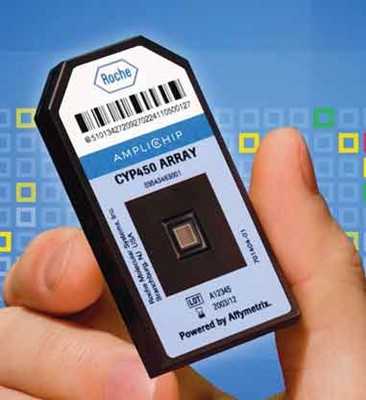Malaria kills hundreds of thousands of people in Africa annually, and it sickens millions more.
疟疾每年都会造成非洲成千上万人的死亡,而且还会使上百万人身染此病。
Medicine can keep the disease in check and save lives.
而药物可以阻碍疾病蔓延并且拯救生命。
But up to half the drugs in Africa may be substandard—and up to a third may be counterfeit.
但非洲一半以上的药物可能并不合格,更有甚者三分之一以上很有可能是假药。
At the moment, there's no easy way to reliably test a drug in the field.
目前尚没有一种简单的方法能可以测试这一地区的药物。
That could change if a new technology called PharmaCheck, developed by researchers at Boston University, moves from prototype to reality.
但如果由波士顿大学的研究人员开发的叫做PharmaCheck的这种新技术从原型样本变为现实,可能会彻底改变现在的境况。
The pill in question is dissolved in liquid.
测试的药品在液体中溶解。
 Miniscule amounts of the liquid pass through channels in what's called a microfluidic chip.
Miniscule amounts of the liquid pass through channels in what's called a microfluidic chip.
微量的液体通过被称为微流控芯片的管道。
The channels include a molecule that will bond to the real drug.
管道中包含的分子将和真药中的结合。
That event produces fluorescence that can be measured by a smartphone app—which reveals how much of the drug is present and active in the pill.
如果是真药将产生荧光,而这可以通过一个智能手机应用程序检测,该应用会显示药物现价及药品的作用。
The technology was recently awarded one of nine grants by the National Collegiate Inventors and Innovators Alliance.
这项技术最近被全国大学发明者和创新者联盟授予多项奖项。
The research team plans to soon test prototypes in the field in Ghana.
这一研究团队计划尽快在加纳地区测试原型样本。
If PharmaCheck works, regulators and pharmacists could have a simple, inexpensive method to determine whether a drug is effective.
如果PharmaCheck起作用,监管者和药剂师就可以有一种简单、廉价的方法来确定药物是否有效。
Which could impede counterfeiters and save thousands of lives.
这可以阻碍造假者并挽救成千上万人的生命。
 Miniscule amounts of the liquid pass through channels in what's called a microfluidic chip.
Miniscule amounts of the liquid pass through channels in what's called a microfluidic chip. Miniscule amounts of the liquid pass through channels in what's called a microfluidic chip.
Miniscule amounts of the liquid pass through channels in what's called a microfluidic chip.